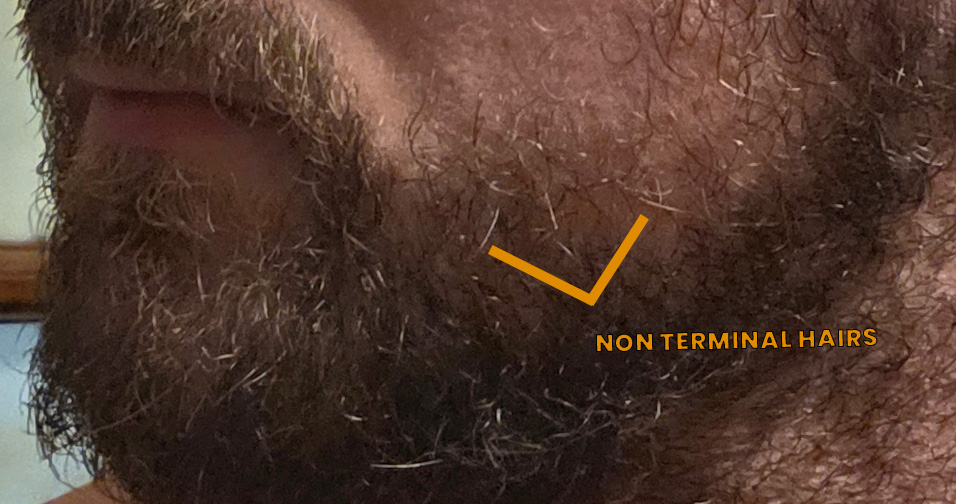It’s been a while, guys. I wanted to return sooner, but between moving and a major personal shake-up, things dragged. Honestly, I’ve been dying to write and make content for the past six months, and I finally forced myself back in the saddle.
Originally, this was supposed to be a quick touch-up. A couple hours revisiting tissue mechanics, some small diet notes, maybe how it ties into sexual health. Nothing major.
Instead, that “touch up” turned into a four-week deep dive that completely shifted my perspective on PE, diet, hormones, and development. I’m still only scratching the surface, but it’s too important not to share.
So this is the pilot episode of a bigger series. Think of it as context setting. If you prefer to watch, the video version is up on YouTube.
Why Carbs Are More Than Just Fuel
Protein builds tissue. Fat handles long-term storage and hormone support. Carbs? Carbs are short-term energy — but also hydration drivers.
Every gram of glycogen (stored carbs) pulls in 3–4 grams of water. That hydration fills muscles, collagen, connective tissue, and even the vascular lining. Hydrated tissues stretch and respond better. Blood flow improves. Erections improve.
That’s not a marketing hook. That’s physiology.
And I had to face the fact: I’d been starving my body of carbs my entire life.
My Absurd Carb Needs
Here’s where things got wild.
Textbook says a guy my size tops off around 500–600 g carbs per day. I had to push to nearly 1,000 g/day before my body actually started to saturate.
- At ~600 g/day (~4,400 calories), I was still flat.
- At ~1,000 g/day (~6,000 calories), I finally started filling out, with stronger EQ.
- Even then, I didn’t gain fat — calipers showed it was fullness, not fat.
Think about that: 1,000 g/day just to hit baseline saturation.
If I’d been under-carbed this whole time, it means everything else — hormones, growth, puberty — was capped.
Puberty, Interrupted (and the TRT Disclaimer)
Here’s the uncomfortable truth.
At nine, I was already oversized for my age — 119 pounds, broad ribcage, wide hips. Not obese, just built way bigger than average.
Body hair showed up far too early, another sign I was running on androgens before the rest of my puberty had even caught up.
At the same time, I was burning 10+ hours a week on basketball. There was no way I was eating enough to support both my activity level and full development.
So puberty stalled.
By 20, I had low-T symptoms. Instead of fueling myself, I dieted harder. That dug the hole deeper.
At 23–24, I finally started TRT. My body “exploded”: beard came in, hairline matured, muscle mass jumped. I thought it was side effects. In reality, it was me finally finishing puberty.
But TRT suppresses the pituitary, cutting off FSH/LH — the hormones that drive testicular and genital development. Which means my penis only grew because PE dragged it forward, while my testes stayed behind.
And here’s the disclaimer: I have used TRT, steroids, and SARMs in the past. I’m not hiding that. But looking back, those compounds probably did more to limit my natural expression than enhance it. By shutting down pituitary signaling, they froze parts of my development that should have continued. Long-term, I doubt they added much to what my biology was already going to express. I’m open for debate on that point, but this is the conclusion my own data points me to.

The Skeleton Audit (and the Family Factor)
I measured my bones: clavicle, femur, sternum, radius. Added up, they map to a 6′5″ skeleton.
My standing height? 6′1″. The missing inches come from spinal compression, mild scoliosis, and dehydrated discs.
Here’s the key point: I’m not “growing new bones” as an adult. Bone length is fixed. What’s changing is position and spacing. My skeleton was literally folded down tighter than it should be. Mobility training, posture work, and hydration are opening up that space again — re-aligning joints, rehydrating discs, and letting my body stand at its true blueprint height.
In just a couple weeks of daily mobility (10–15 minutes a day, longer on rest days), I went from a compressed ~5′11″ baseline to ~6′2″ barefoot. That’s not growth. That’s decompression.
And it makes sense when I look at my family. All the men are tall and wide. I was considered the runt — but only because my frame was folded, suppressed, and under-fueled. The genetics were there the whole time. Now that I’m feeding and decompressing, I’m finally matching the family blueprint.
Give it a year or two, and 6′5″ barefoot is realistic.
Current Body Status
193 lb: flat and depleted — lean but undersized, posture compressed.
215 lb: fuller frame, shoulders/chest heavier, more presence, posture opening up (but still “flat tire” muscles, not fully saturated).

So far:
- Weight: 193 → 215 lb in weeks, mostly glycogen + water.
- Muscle feel: fuller, but still like flat tires — big but unpressurized. Once fully saturated, they’ll feel like firm, inflated balloons.
- Fat: none gained (per calipers).
- Height: rebounding fast, inches regained already.
The changes are fast enough that they don’t always translate in photos, but in person the difference is obvious.
The Penis Piece
I was always quite big — I just didn’t realize it. As a preteen, I was already very overdeveloped for my age. By 18, I measured 8″ in length and 5.75″ in girth — objectively huge — yet I still couldn’t grow hair on my chin. That mismatch shows how unevenly my puberty was expressing.
By 2019, I measured 7.5″ by 6″, but that wasn’t shrinkage — it was bad EQ masking my real baseline.
Across my PE career, I’ve gained ~3 inches in length, but it breaks into two distinct phases:
- ~1.75″ came during my first puberty. This was before carbs, before TRT. My tissue was still plastic and unfinished, and PE accelerated growth during that open window.
- ~1.25″ came later during TRT. Not because testosterone enlarged my genitals (it doesn’t — TRT blocks FSH and actually stalls testicular development), but because PE dragged the tissue forward despite the hormonal block.
Even now, my testes are underdeveloped relative to the rest of my body. The clearest giveaway is the peach fuzz still on my scrotum — a Tanner-stage marker showing puberty hasn’t fully closed. My penis advanced because of PE pressure and tissue mechanics, but my gonadal development remains incomplete.
The Fully Expressed Phenotype Theory
Here’s the framework this all points to:
- Puberty can stall from stress, under-eating (especially carbs), over-exercise, or hormone suppression.
- If it stalls, you never hit your genetic blueprint.
- You can restart. With carbs, sleep, mobility, and (sometimes) hormone support, you can finish what was left undone.
For me, that blueprint has always been obvious in pieces:
- Very overdeveloped genitals from an early age, long before the rest of puberty had caught up.
- Exceptionally high lean body mass capacity — my carb/glycogen demands are massive, which only makes sense if my system was built to carry more tissue than average.
- A 6′5″ skeletal frame compressed into 6′1″, now slowly unfolding with hydration and mobility.
It’s not that I’m cheating biology — I’m just finally letting biology run its course. My oversized pieces were always there; they just weren’t synchronized.
Yes, I’ve experimented with TRT, steroids, and SARMs. But in hindsight, those interventions probably slowed down or blocked parts of my expression, not sped them up. The real gains came from food, mobility, and PE — not the drugs.
Where my endpoint is remains to be seen. But what’s clear is that I was never meant to stop at “big.” My body has always been primed for huge.
That’s the Fully Expressed Phenotype Theory: not creating something unnatural, but allowing the phenotype you were born with to actually finish expressing.
What’s Next
This post is the pilot — the big picture. From here, I’ll branch into details:



